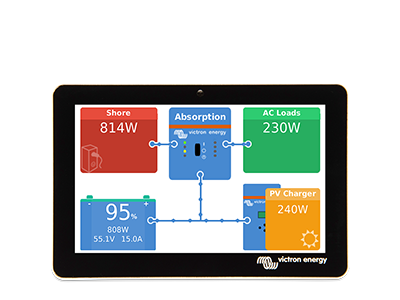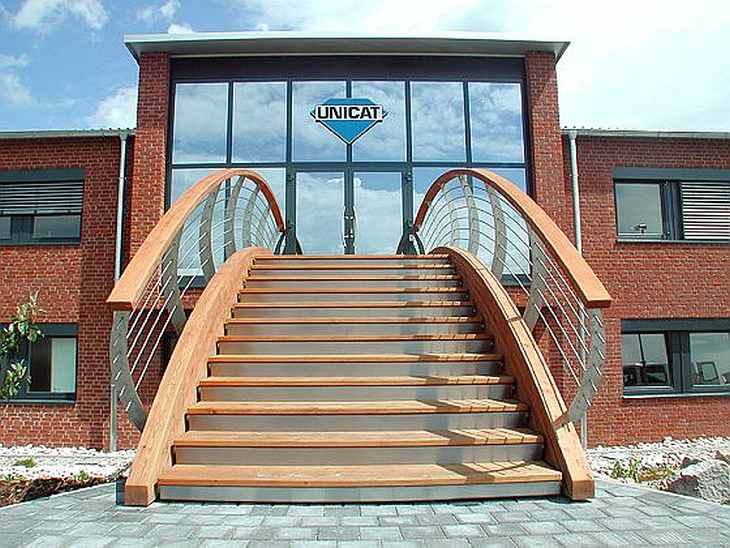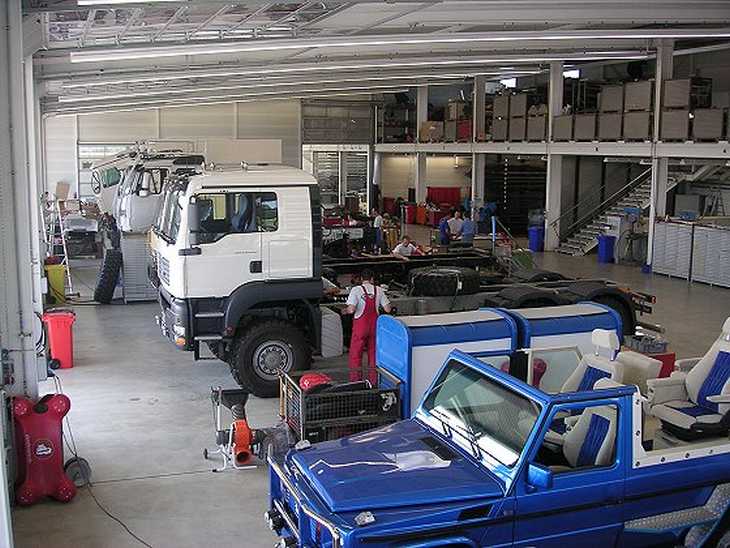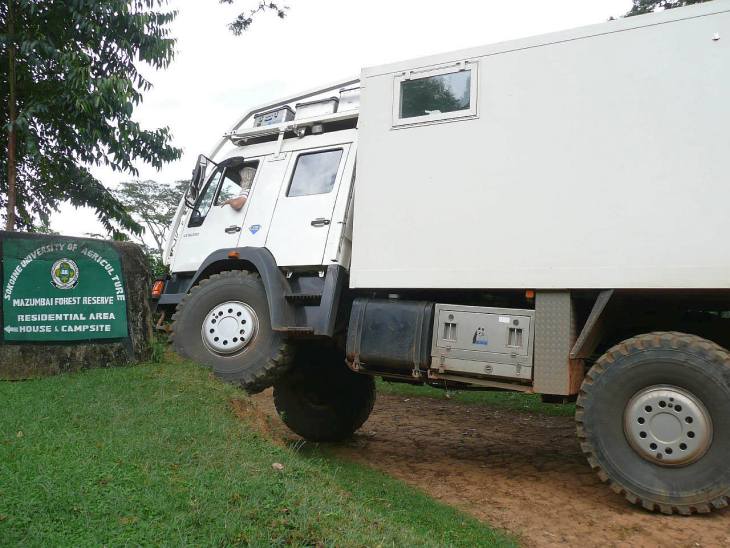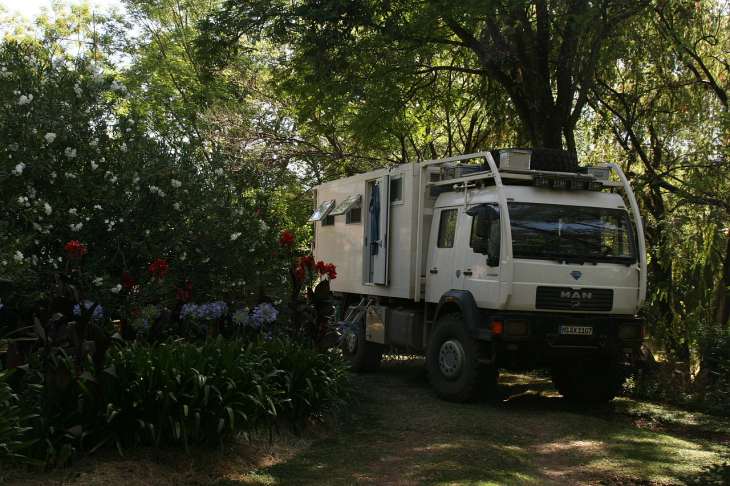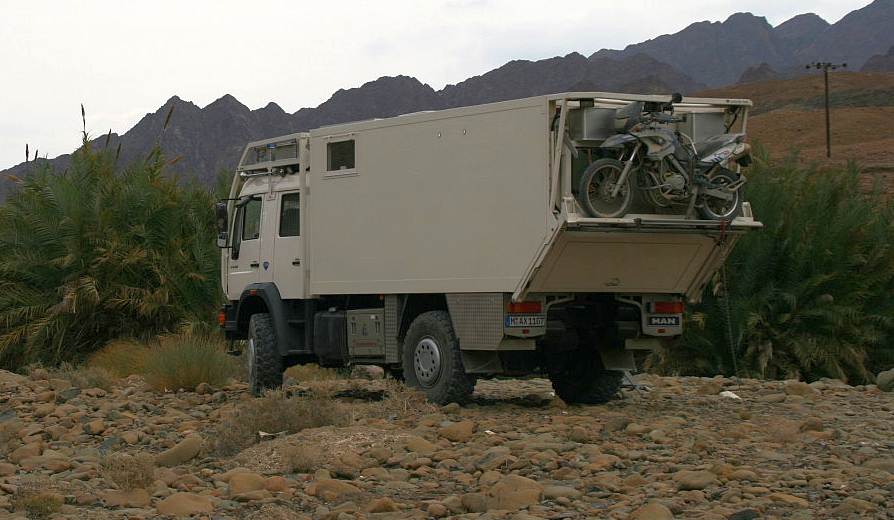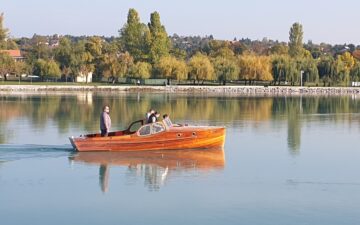
If you build a quality product, it’s worth shouting about. In this case though I’d go one step further and roar – UNICAT build exceptional expedition vehicles.
In writing this particular blog I have to confess I simply did not know where to start and for that I apologize to Thomas Waas of UNICAT for the delay. First there was the sheer choice of vehicles to consider, the impressive manufacturing facility at Dettenheim in Germany, an endless list of vehicle equipment options, plus photographs and information galore of expeditions undertaken to a plethora of countries – one of which you can see in the photograph above.
Add in the fact that offroad adventure is an area close to my own heart – plus I also learned from Thomas that they equip all their vehicles with one or more of Victron Energy’s products, and as you might imagine I was stuck for choice as to where to even begin. Earlier this month though I did make a start in the blog ‘Victron Energy goes Off-Road‘. Here then is the follow up to that blog as promised.
Introduction
To capture the ethos behind UNICAT I can do no better than quote another Thomas – Thomas Ritter who is one of the founders.
“My desire to travel individually and my passion for technical perfection led to a decision of great importance: the design and construction of my own expedition vehicle. That was 30 years ago. Today, I am still keen about traveling. And from my passion for engineering, UNICAT evolved.”
Evolved they have as you can see in the photographs below.
Manufacturing & Facilities
UNICAT’s facilities encompass 11,000 square meters, including a company-owned 5,000 square meter off-road area for tests, tryouts and customer training. In addition, there is a waste disposal station, a wash facility, and ample storage area for customers, particularly during lengthier breaks in their travel activities.
The main building has 2,100 square meters of production and storage space with an extensive range of state-of-the-art machinery and equipment. The workspace is divided into eight chassis and body assembly stations working in parallel. This system promotes a high level of synergy in the work process. In addition, there are 3 bays for testing, training and service. A large warehouse ensures the smooth flow of materials and an adequate stock of spare parts. The remaining 580 square meters house offices, conference rooms and social facilities.
Victron inside
Whilst UNICAT typically fit their vehicles with Victron Energy products such as a MultiPlus 3000/70, one or more Solar Chargers (MPPT 75/50 and MPPT 75/15), sometimes a small inverter (24V/300W), BMV Battery Monitors, a Color Control CCGX and Battery Protect – it is worth detailing Thomas Waas’s own personal expedition vehicle that he used from 2006 to 2013 on a continuous trip to and through Africa – visiting Sudan, Ethiopia, Kenya, Tanzania, Uganda, Malawi, Botswana, Mozambique, South Africa, Namibia and Zimbabwe.
You can also read more at http://www.auf-achse.info/
Whilst the site is in German and I can do little more than ask for a beer in that language, I found if using Google Chrome it translates well enough into English.
Thomas Waas’s UNICAT
Here is what Thomas had to say about the equipment fitted to his exceptional expedition vehicle:
2 x MultiPlus 3000/70/24V running when required
– Gaggenau Induction cooking field (3 zones)
– Gaggenau Steam Oven (the proper one for up-market kitchens)
– Saeco Espresso Machine
– Kenwood Washing Machine (3kg)
– AC System
– Blow-Dryer for The Wife
– Ironing
– Machines to use (Drilling Machine, Flex, Welding)
– 30l Geyser (when enough Solar or Shore power is available)
– up to 2 x 70A charging (if 220V are available from Shore or Generator)
1 x Victron Inverter 24V/350W running 24/7
– multiple USB-Charging sockets
– MAC mini as Personal Computer, TV-Station, Multimedia Station
– 27″ Screen
– 2 x B&O Beolab 3 Loudspeakers (active)
1 x MPPT 75/50 connected to 800Wp Solar Panels
1 x MPPT 75/15 connected to 110Wp Solar Panels
can be bridged together (at MPPT 75/50 input)
1 x Color Control CCGX including UNICAT’s own Remote Control System connected via Modbus to the CCGX, via Ethertrak to various Sensors and Switches, via Mini-Computer, UMTS-Stick, LAN-Stick, Iridium-Modem to the world.
Batteries are AGM Batteries. 24V / 630Ah which Thomas intends to replace with Li-Ion as soon as there is a satisfactory solution for connecting them to multiple charging inputs (MultiPlus, Xantrex Chargers (90-260V), Solar, Alternator (second Alternator is solely for the body of the truck) and possibly a Wind-Turbine. As Thomas says: “If Victron can come up with such an integrated charging solution where all charging is integrated and interconnected, enabling the use of Li-Ion Batteries, the suite of products would be even more perfect for our application”.
Victron reliability
In choosing Victron Energy products Thomas points out that through all his off-road travels he has never experienced any problems with any of the Victron products.
Here is what he had to say: “I went through hot climates (very hot, indeed, in Saudi Arabia I hit 53°C), very humid, very dry, I went up to more than 4,000 metres above sea level (Ethiopia), went through thousands of kilometers of extremely corrugated road (e.g. Moyale – Isiolo – Nairobi – Masai Mara), crossed deserts, forded through water 1.2m deep…
We as a company are very happy with Victron Energy’s products and I personally like the Metal-Casings and the sturdy mounts and – as I said above – not a single Victron Energy system ever failed me no matter how harsh the conditions were.”
Conclusion
If you are going to test an expedition vehicle and its associated energy systems, then to my mind Thomas’s travels are proof indeed of the efficacy and reliability of Victron’s products. In fact such reports are why I too chose Victron for my boat. This presents a dilemma. As a total off-road expedition and off-road motorcycle fan also – I want a Victron equipped UNICAT too!
Credits
Many thanks to Thomas Waas of UNICAT for the information and photographs above. In closing I’ll leave you with one of my favourite photos from Thomas’s travels of a Cyprus tree – which for me represents all those travels and adventurous choices you can make. Exceptional expeditions anyone?
John Rushworth



